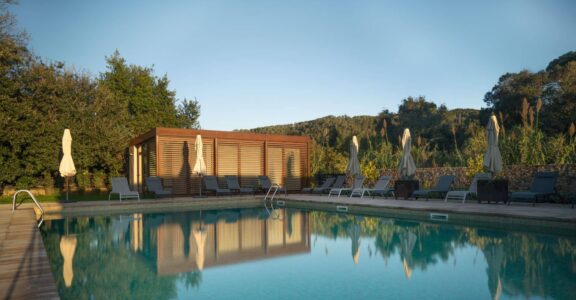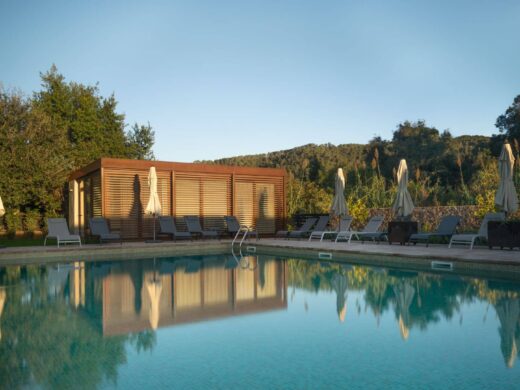The Essentials less than 30 km
Routes Along the Coast
The circular coastal road connecting Palamós to a number of coves and fishing villages such as Palafrugell, then Begur and Pals harbour what are undoubtedly the most beautiful routes along the Costa Brava.
Along the southern portion, which is the closest to the hotel, you can start off at Palamós and then head to Cala Fosca, where you’ll find the 12th-13th century castle, Castell de Sant Esteve. Even further out you’ll come right into the vast Platja de Castell, surrounded by a wild yet protected environment.
Beforehand, you will have crossed the picturesque Cala s’Alguer where the brightly-coloured 15th century fishing huts will have left you with an unforgettable postcard memory.
At the end of the Castell beach, you’ll also come across the ruins of the Iberian village Castell where the structures date back to the 6th century BC and where some of the scenes from the motion picture “Perfume: The Story of a Murderer” were filmed.
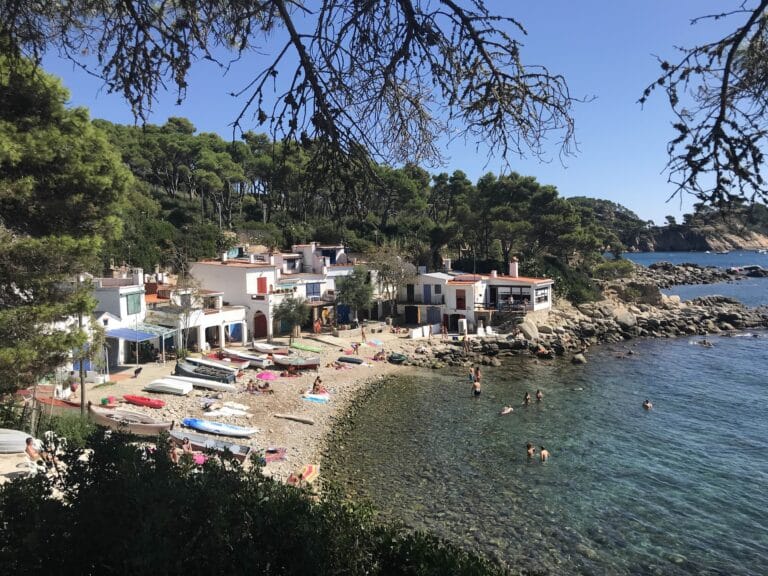
Cala S’Alguer
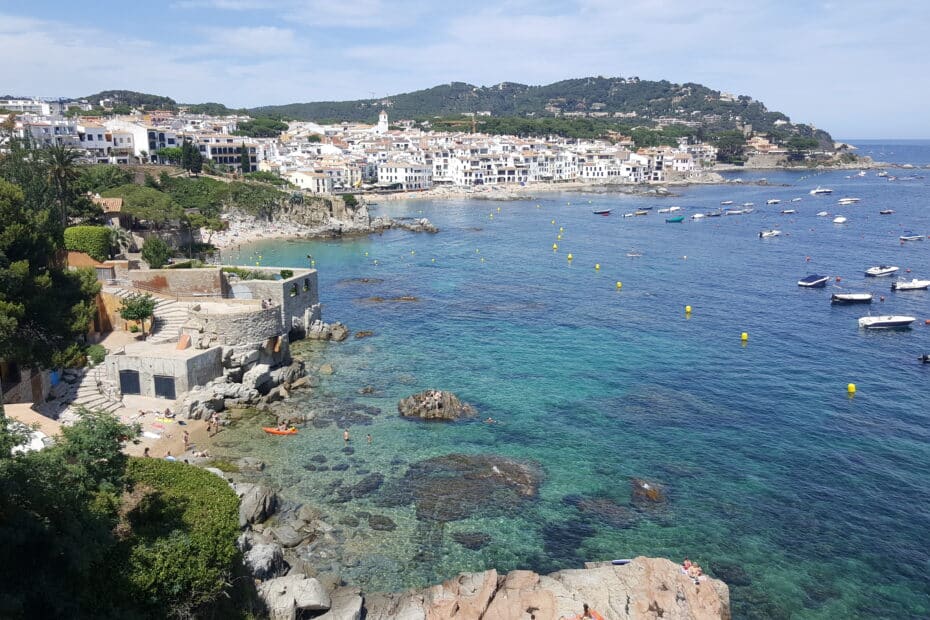
View of Calella de Palafrugell
Continuing along the coast to the north, you’ll find the rocky Cala Estreta – one of the most hidden away on the Costa Brava – before a short break to visit the Cap Roig gardens, which were created in 1927 just below the picturesque castle as if perched above the Mediterranean.
A bit further away is the magnificent Cala Platja del Golfet, then the heart of the small fishing village of Calella de Palafrugell, which will lead you all the way to Platja de Canadell – the most important beach in the village located to the far north. The quaint white houses decorated with flowers will give you an urge to lose yourself among the narrow paved alleyways. Plus, the late 19th century church stands out because of its simplicity in style and colour.
Finally, if you continue along this route a little more to the north, you’ll reach the small cove Llafranc where a remarkable village was established due to the port and lighthouse high up on the Sant Sebastía cape. This is the second most important coastal development belonging to the town of Palafrugell after Calella de Palafrugell and ahead of the tiny hamlet Tamariu, which is much more difficult to access a few kilometres to the north, yet well worth a stop.
Medieval Route Through the Lands
Just a few kilometres from the coast, we suggest starting this route in the medieval village of Begur, which rises above the l’Empordá plains. The charming roads, the medieval citadel, and the remains of the castle with its 16th century defence towers built to protect it from pirate attacks and invasions are more than enough to make this wonderful place worth a visit – not to mention the incredible coves: Aiguablava, Sa Tuna, and Sa Riera, among others.
To the northwest of Begur is Pals, where the emblematic Horas Tower is the only thing left of the old castle which was destroyed during the Catalan Civil War in the 15th century. You can take in a panoramic view of the Medes Islands and the Montgrí Mountain from the top.
Continuing along towards the west, you’ll arrive at Peratallada, a small village of some 500 inhabitants with narrow and shady medieval alleys. The oldest writings on record make reference to its 10th century castle and the town has been declared a historic and artistic heritage site. In fact, Peratallada is one of the most important and most well-conserved medieval architectural gems in Catalonia.
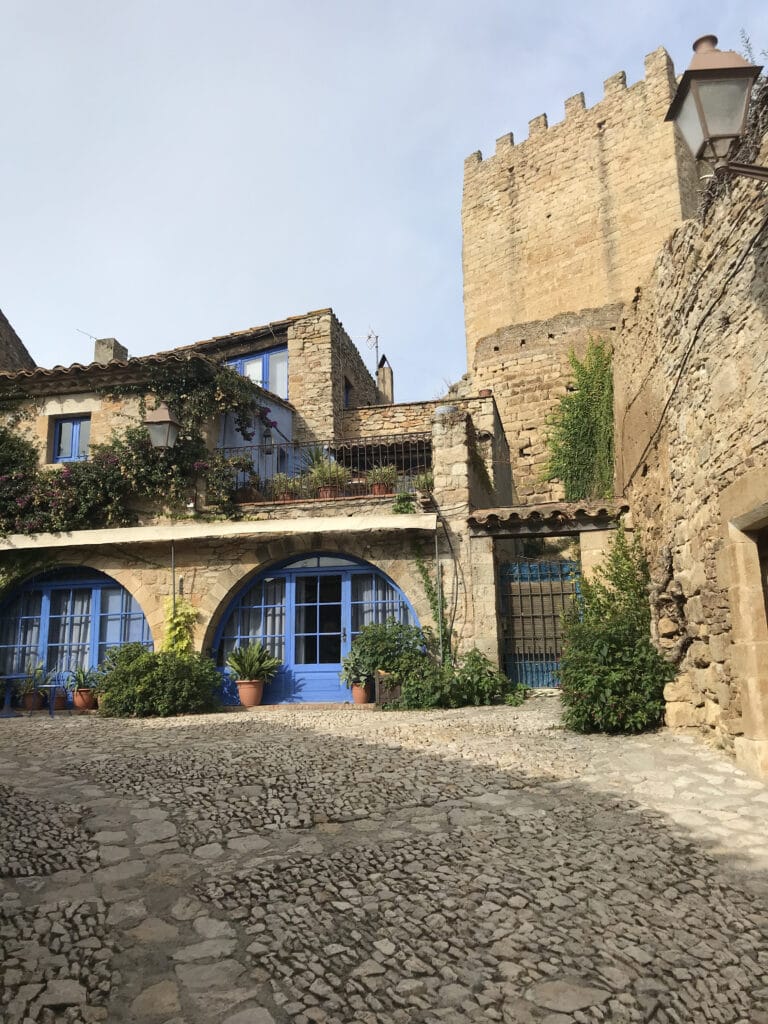
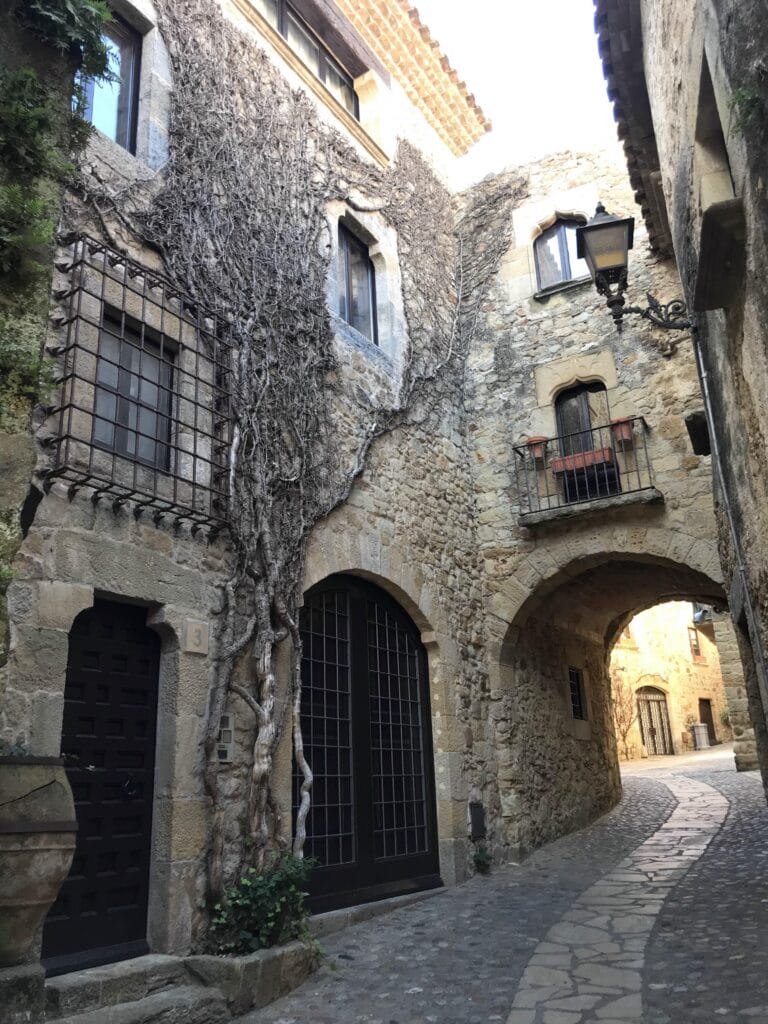
Quite close to Peratallada is another more modest picturesque village worth a visit: Palau Sator. Beyond its charm and despite the small size, this village houses several interesting restaurants. It’s often frequented by the locals in Catalonia who come for a walk and some good food at weekends.
To the northwest of Peratallada, we recommend you visit Ullastret, a charming village with an amazing archaeological site just a stone’s throw away from the old centre for those who are interested in all things ancient: the ruins of the largest Iberian colony discovered to date in Catalonia.
Finally, if you’d like to visit the filming location of one of the most famous comedies made in Spain “8 Apellidos Catalanes” (Spanish Affair 2) and discover some of the most traditional architecture in the region, your path will surely take you to the old village of Monells, a must-see with its alleyways, great square and arcades.
Wine Tourism
By staying at our hotel, you are located in the heart of the wine region that bears the Denomination of Origin Empordà (DO Empordà). The vineyard exploited on the property is part of this denomination.
The property includes many wineries of all sizes and different types of viticulture, from those that are geographically distant (Peralada, Terra Remota, Cosmic…) to those that are closer to our hotel (Can Sais, Celler D’en Marc, Brugarol, Mas Molla, Clos d’Agon, Can Sais…).
If you are interested, we would be delighted to provide you with further information on this subject, to advise you and even organise various visits for you on this theme.
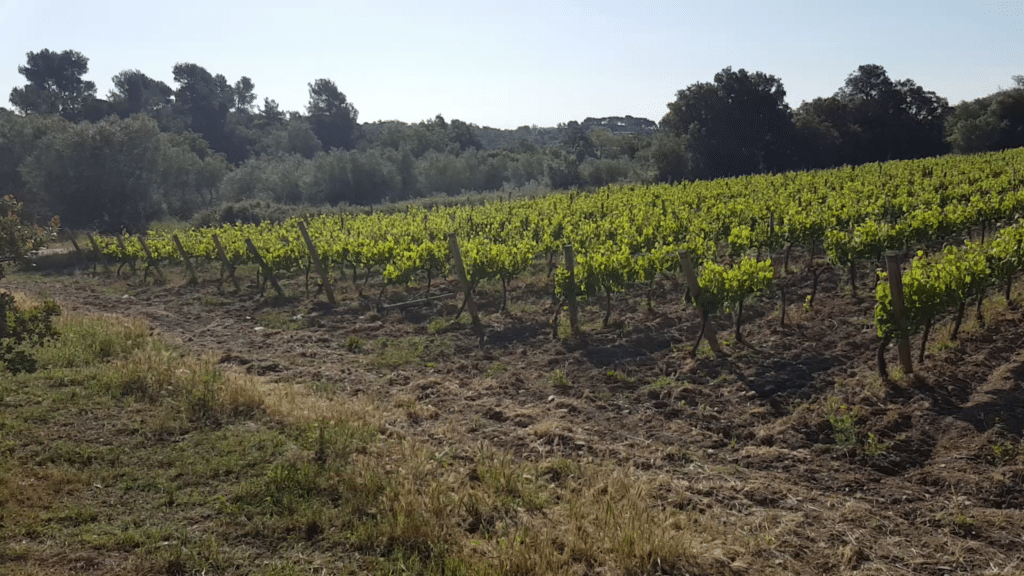
Cala S’Alguer
Not to Miss – > 30 km
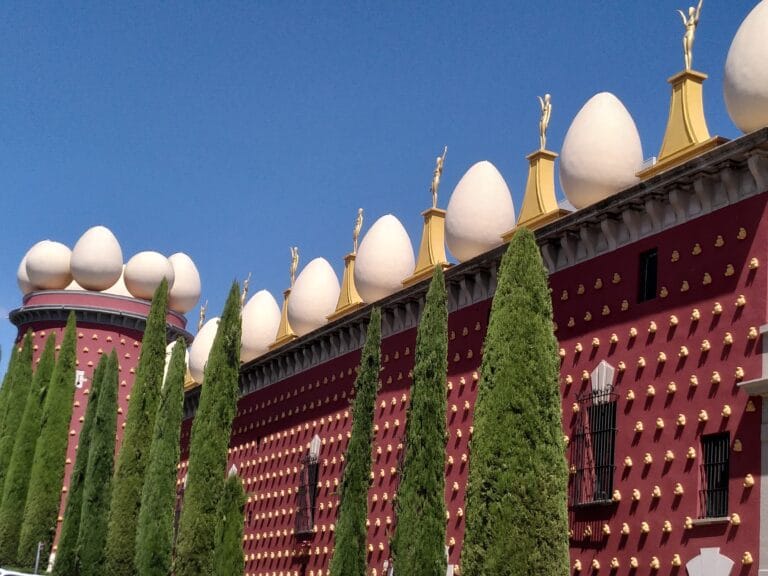
Dalí Theatre-Museum
The Dalí Route
For art enthusiasts, the Dalí Route which is a triangle comprised of the villa of Figueres and the villages of Púbol and Cadaqués, is an absolute must.
Closest to our hotel is Gala Dalí Castle Púbol where you can see a number of paintings and drawings which Dalí gave his companion Gala in addition to a collection of haute couture gowns. Dalí decorated the inside with the idea of turning it into a refuge for Gala and it was even agreed that no one could enter the inside of the castle without a written invitation from him. This site is a unique reflection of the relationship between Dalí and his muse.
After visiting the castle, Figueres awaits at just 40 km away with its eccentric Dalí Museum-Theatre, which was built over the ruins of the town’s old Municipal Theatre. It’s home to a good portion of his collection of most famous surrealist works.
The last stop on this extravagant bohemian route dedicated to art is Cadaqués and, more specifically, Portlligat on the rocky coast not far from the French border. This is where you can find the Dalí Museum house, a place that is internationally known for being the artist’s workshop and place of residence.
Tip: If you don’t want to miss anything during your route dedicated to this artist, we recommend extensively exploring the areas around Platja de Castells (mentioned above). There, you’ll find a rather unique little home with a one-of-a-kind door as a wonderful nod to Dalí’s singular artwork. It’s called the “Barraca de Dalí”, a small house built by Mr Puig Palau, one of the artist’s close friends who wanted to him to be able to work there. Although there’s no proof Dalí ever painted anything in this place, it still captures the interest of many visitors who like to pose in front.
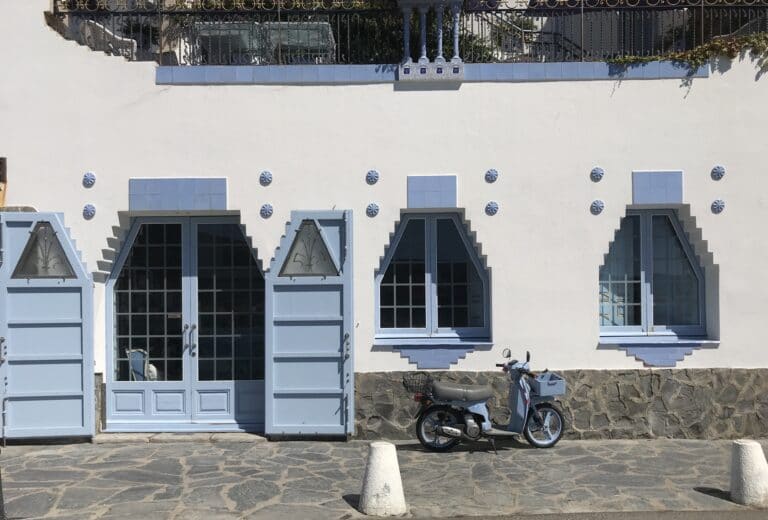
Center de Cadaqués
Girona
Girona is one of the most important historic towns in Catalonia and it’s got a unique historic centre with a number of interesting places to visit. The main tourist attraction to visit in Girona is no doubt the Cathedral of Santa Maria. Its construction began in the 12th century and it combines elements of Roman, Gothic and even a more modern style.
One important thing to note is that in order to enter the cathedral, you must climb up the grandiose stairs which will be somewhat familiar if you’ve seen the series “Game of Thrones” as they were used as decor in several season 6 scenes.
Quite near the cathedral is the Basilica of Sant Feliu, which is known for its remarkable bell tower. Gérone is also home to one of the most important and most well-conserved old Jewish quarters in the world, le quartier El Call, as well as some exceptionally restored Arab baths. Another must-see in Gérone are the colourful homes along the River Onyar which have given this town the nickname of Catalonia’s “Little Florence”.
You’ll also find several museums that may be of interest :
- The Archaeology Museum of Catalonia (Monastery of Sant Pere de Galligants)
- The Jewish History Museum
- The Gérone Art Museum
- The Cinema Museum
- The Gérone Town History Museum
Heading northwest from Gérone, you’ll come across the lake at Banyoles which is the largest natural lake in all of Catalonia. It was actually an Olympic site for several nautical sports during the 1992 Barcelona Games: a unique place because of the beautiful landscapes.
Even further to the north you’ll find the wonderful medieval village of Besalú. This village stands out because of the imposing bridge which was built in the 11th century to cross the River Fluvia. Quite near Besalù you can also find the Garrotxa Volcanic Zone Natural Park which is ideal for those who love hiking and invigorating mid-range landscapes.
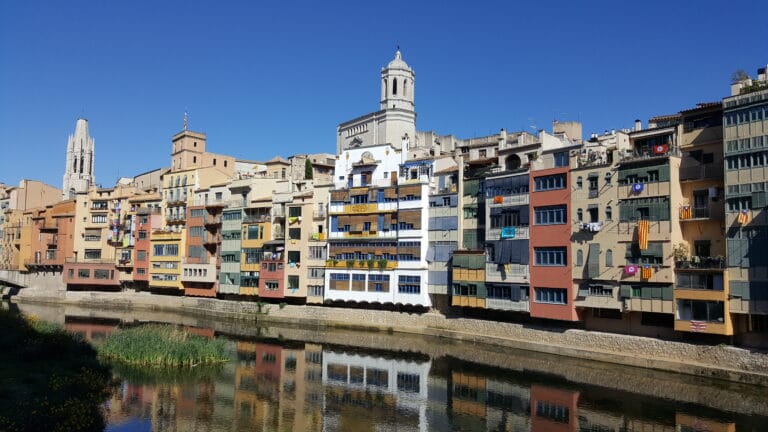
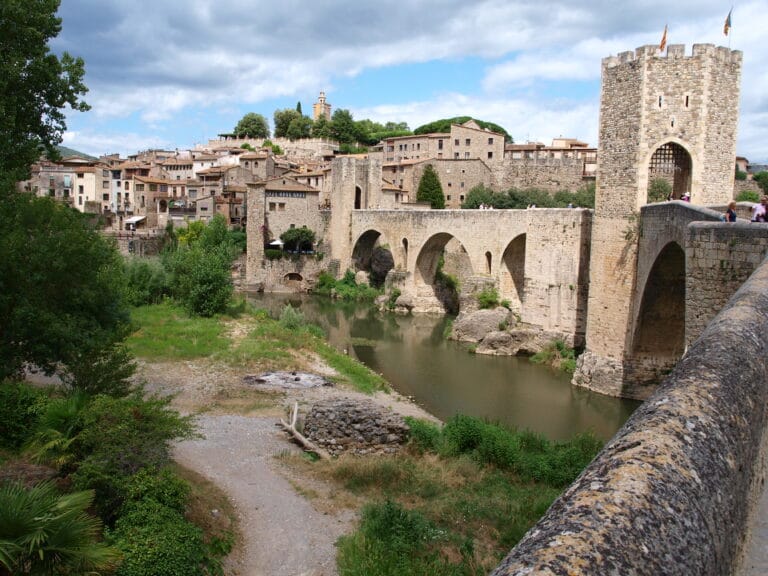
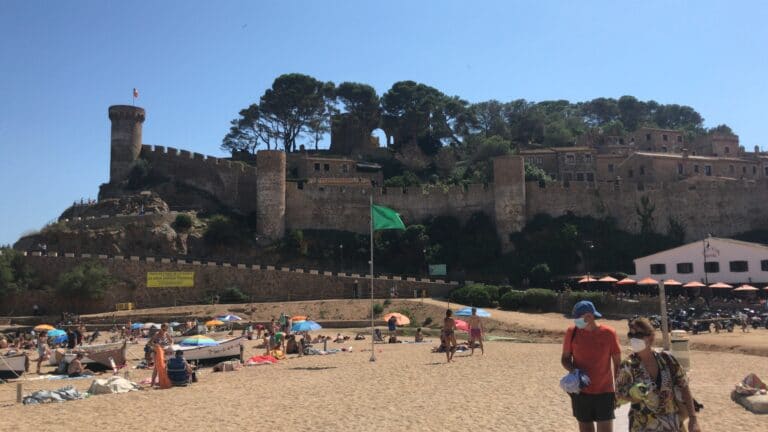
Castle of Tossa de Mar
Other Sites Along the Coast
Tossa de Mar is an old fishing village with a rich history. Declared a national historic and artistic monument in 1931, the fortified walled Vila Vella is the local emblem. The charming area inside Vila Vella features narrow cobblestone roads in true medieval style.
The charming area inside Vila Vella features narrow cobblestone roads in true medieval style.
This village is also famous for having dazzled actress Ava Gardner when filming “Pandora and the Flying Dutchman” in 1951; hence, the life-sized statue of her there.
